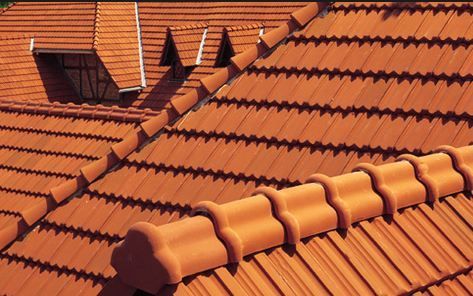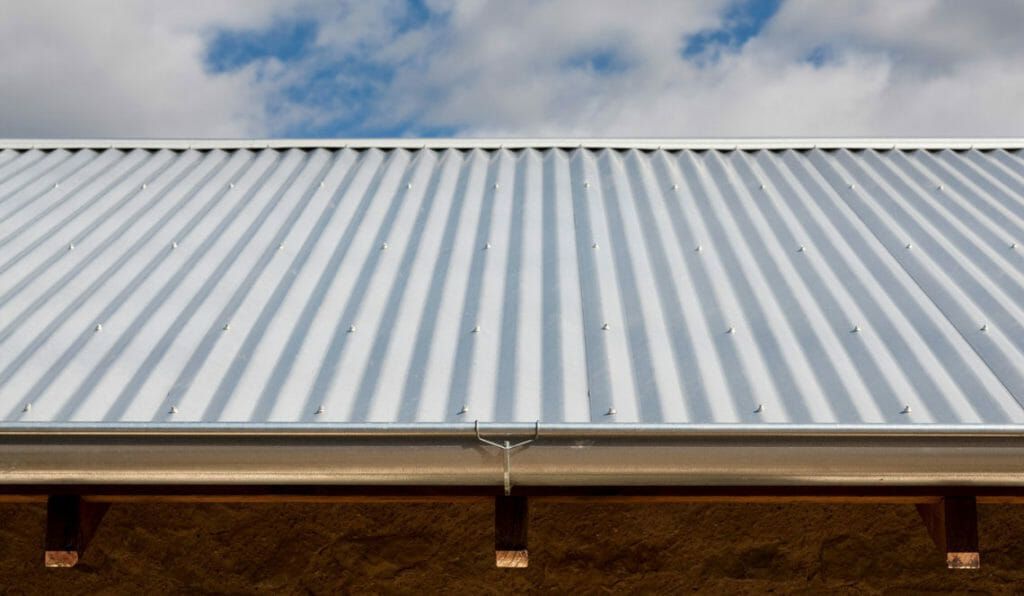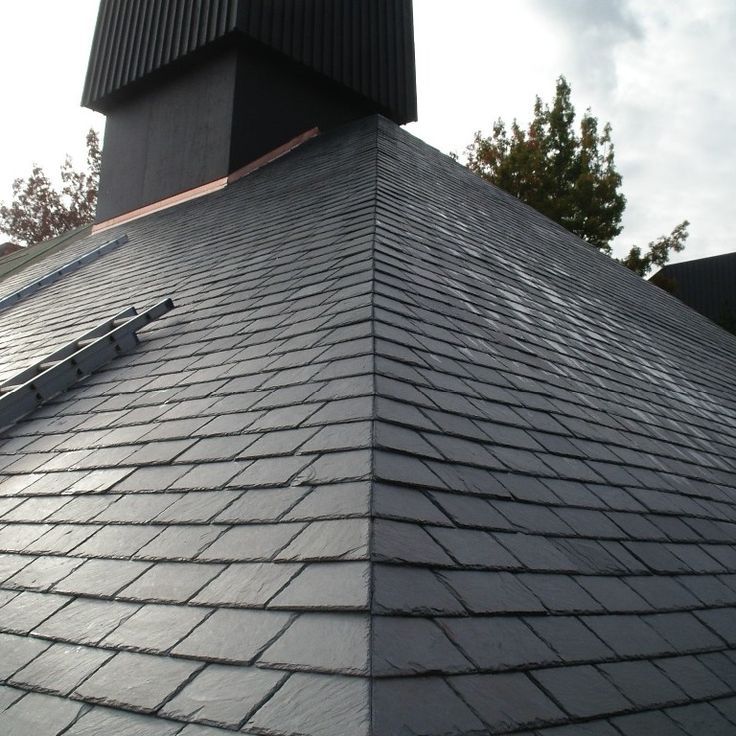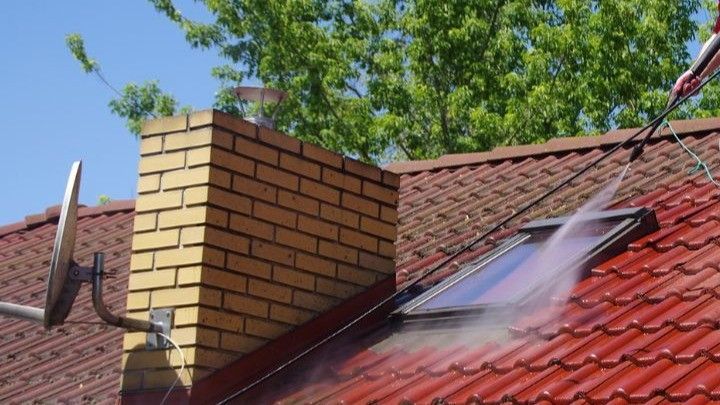Tile Roofing Options in Washington DC
Tile roofing adds beauty and durability to homes in Washington DC. At Washington DC Roofing Company, we offer many tile options to suit different styles and budgets. Our tile roofs can last 50 years or more with proper care and maintenance.
We install concrete and clay tile roofs in a variety of colors and profiles. Flat tiles give a sleek look, while S-shaped tiles add dimension. Light colors reflect heat, while darker shades absorb it. We help clients choose the best tile for their needs.
Tile roofing costs more upfront than some other materials. But its longevity makes it cost-effective over time. We provide free quotes so clients can compare options. Our expert installers ensure a quality job that protects homes for decades.

Types of Tile Roofing Materials
Tile roofing comes in several materials that offer unique benefits. We'll explore the main options available for homes in Washington DC, including their durability, appearance, and cost considerations.

Clay Tile Options
Clay roof tiles are a classic choice known for their longevity and distinctive look. They come in various shapes like flat, curved, or interlocking designs. Clay tiles resist fire and insects well.
Colors range from natural terracotta to glazed finishes in many hues. This variety lets homeowners match their home's style precisely.
Clay tiles can last over 100 years with proper care. They're heavier than other options, so roof structure matters. While pricey upfront, their long lifespan often balances the cost over time.

Concrete Tile Varieties
Concrete tiles offer a more affordable alternative to clay. They mimic the look of other materials but at a lower price point. These tiles are highly customizable in shape and color.
Concrete roof tiles come in styles that resemble slate, wood shake, or clay. This versatility makes them suitable for various architectural designs.
They're durable and fire-resistant, lasting 50 years or more. Concrete tiles are heavy, so roof reinforcement may be needed. Their weight helps insulate homes, potentially lowering energy costs.

Slate Tile Alternatives
Traditional slate is beautiful but expensive. Synthetic slate offers a similar look at a fraction of the cost. These tiles are made from recycled materials and polymers.
Synthetic slate is lighter than natural stone. This makes installation easier and puts less stress on the roof structure. It resists impact well, important in areas with hail.
Composite slate tiles come in many colors and styles. They can closely mimic the appearance of natural slate. With proper care, these tiles can last 40-50 years.
Why Choose Tile Roofing in Washington DC
Tile roofing offers many benefits for homeowners in Washington DC. It stands up well to the local climate while providing a beautiful look for homes.
Durability and Longevity
Tile roofs are built to last in Washington DC's varied weather. They can withstand heavy rain, snow, and high winds common in the area.
Many tile roofs last 50 years or more with proper care. This makes them a great long-term investment for homeowners.
Tile is also fire-resistant and won't rot or get damaged by insects. This helps protect homes from common threats.
We find that tile roofs need less upkeep than other options. This saves time and money on repairs over the years.
Aesthetic Appeal
Tile roofs add beauty and charm to Washington DC homes. They come in many colors, shapes, and styles to match any house design.
Clay tiles give a warm, classic look perfect for historic homes. Concrete tiles offer a more modern feel for newer buildings.
We can create unique patterns with tiles to make your roof stand out. This boosts curb appeal and home value.
Tile roofs keep their good looks for decades without fading or warping. This helps maintain your home's appearance long-term.
Energy Efficiency
Tile roofs help keep Washington DC homes cooler in summer and warmer in winter. The tiles create a natural air barrier that insulates the house.
This can lead to lower energy bills year-round. Many homeowners see savings on heating and cooling costs after installing a tile roof.
Tile reflects more sunlight than other roofing materials. This reduces heat absorption and keeps attics cooler.
We can install tile roofs with extra ventilation to boost energy savings even more. This improves air flow and temperature control.
Maintenance and Upkeep of Tile Roofs
Proper care of tile roofs ensures their longevity and performance. Regular cleaning and timely repairs protect the roof's integrity and keep it looking great for years to come.

Routine Cleaning
We recommend cleaning tile roofs every 1-2 years to remove dirt, debris, and algae buildup. Use a soft-bristled brush or low-pressure washer to gently scrub tiles. Avoid harsh chemicals that may damage the tiles' protective coating.
For stubborn stains, a mixture of water and mild detergent works well. Rinse thoroughly after cleaning to prevent soap residue.
Clear coating with 100% acrylic sealer can restore a concrete tile roof's luster. We suggest hiring a professional for this task to ensure proper application.
Trim overhanging tree branches to reduce leaf litter and prevent damage from falling limbs. Clean gutters regularly to maintain proper water drainage.

Damage Inspection and Repair
We advise inspecting your tile roof twice a year, ideally in spring and fall. Look for cracked, chipped, or missing tiles. Check for signs of water damage in the attic or ceiling.
Replace damaged tiles promptly to prevent leaks. Loose tiles should be re-secured. Inspect and repair flashing around chimneys, vents, and skylights.
Address small issues quickly to avoid costly repairs later. Hire a reputable contractor for complex repairs or if you're uncomfortable working on the roof yourself.
After severe weather, conduct an additional inspection to check for storm damage. Document any issues for potential insurance claims.
FAQs
Tile roofing in Washington, DC requires careful consideration of materials, maintenance, and installation quality. We address key concerns to help you make informed decisions about your roof.
What factors should I consider when choosing tile roofing materials in Washington, DC?
When selecting tile roofing materials in DC, we recommend considering durability and weather resistance. Clay and concrete tiles are popular options that withstand our varied climate.
Color and style are important too. Choose tiles that complement your home's architecture and meet local guidelines.
Weight is another factor. Ensure your home's structure can support the tile type you prefer. Some older buildings may need reinforcement.
What maintenance is required for tile roofs in climates like Washington, DC?
Tile roofs in DC need regular inspections, especially after severe weather. We suggest checking for cracked or loose tiles at least twice a year.
Cleaning gutters and removing debris prevents water damage. This is crucial in autumn when leaves fall.
In winter, watch for ice dams. Proper attic insulation and ventilation help prevent these issues.
How does the Washington DC Roofing Company assure quality in their tile roofing installations?
We use only high-quality, weather-appropriate tiles for DC homes. Our team is trained in proper installation techniques for our local climate.
We follow strict quality control measures throughout the installation process. This includes careful underlayment application and proper tile alignment.
After installation, we conduct thorough inspections. We check for secure fastening and proper water drainage to ensure long-lasting performance.
Seamless Project Management Process
At Washington Roofing Company, we use a step-by-step approach to manage commercial roofing projects. Our process ensures smooth execution from start to finish.
FAQs
TPO roofing installations come with many common questions from our customers. We've gathered the most important information about costs, durability, brands, and maintenance to help you make informed decisions.
What are the factors influencing the cost of a TPO roof installation?
Several key elements affect TPO roofing costs. The size of your roof is the primary factor, as larger areas require more materials and labor.
The thickness of the TPO membrane impacts pricing significantly. We offer options ranging from 45 mil to 80 mil thickness, with thicker membranes costing more but providing enhanced durability.
Your roof's complexity matters too. Buildings with multiple penetrations, HVAC units, or unusual shapes require more detail work and flashing.
Accessibility affects labor costs. If your roof is difficult to reach or requires special equipment, this will increase the installation price.
How long does a TPO roof typically last under normal weather conditions?
TPO roofs installed by Washington DC Roofing Company typically last 20-30 years with proper maintenance. This lifespan depends on several factors including membrane thickness and local climate conditions.
The quality of installation significantly impacts longevity. Our certified installation team ensures all seams are properly welded and details are correctly finished.
Modern TPO formulations have improved UV and heat resistance compared to earlier generations. This enhancement helps maintain reflectivity and structural integrity over time.
Regular inspections can help identify and address small issues before they compromise the roof's lifespan.
Which TPO roofing brand shows the highest performance and reliability?
We primarily install GAF and Firestone TPO systems due to their consistent performance records and extensive warranties. These manufacturers have refined their formulations over decades.
GAF EverGuard TPO offers excellent heat and UV resistance with their advanced material science. Their products perform exceptionally well in Washington DC's varying climate conditions.
Firestone UltraPly TPO provides superior puncture resistance and flexibility, maintaining performance through seasonal temperature changes. Their seam strength is among the industry's best.
Both brands offer comprehensive warranty options that can extend up to 30 years when installed by certified contractors like us.
Are there any notable drawbacks when using TPO roofing for commercial buildings?
Installation quality is critical with TPO systems. Poorly welded seams can lead to leaks and premature failure, which is why we invest in ongoing training for our installation teams.
Some older TPO formulations had issues with premature aging and cracking. Today's improved materials have largely resolved these concerns, but choosing a quality manufacturer remains important.
TPO can be punctured by sharp objects, making regular roof inspections necessary. We recommend establishing maintenance protocols after installation.
While highly energy efficient, TPO's initial cost may be higher than some traditional roofing systems, though this is typically offset by energy savings over time.
Can a TPO roof be installed over an existing roofing system, and what are the considerations?
Yes, in many cases we can install TPO over existing roofing, potentially saving on removal costs and reducing landfill waste. This approach is called a "recover" installation.
The existing roof must be structurally sound and relatively dry. We conduct moisture scanning to detect any trapped water that could compromise the new system.
Building codes typically limit commercial buildings to two roof layers. We'll verify local regulations and assess your current roofing situation during consultation.
Proper preparation may include adding recovery board insulation to create a smooth, compatible surface for the new TPO membrane attachment.
Tell Us About Your Roofing Project
Contact Us
Our Newsletter
We will get back to you as soon as possible.
Please try again later.
Subscribe For Newsletter
All Rights Reserved | Washington DC Roofing Company
